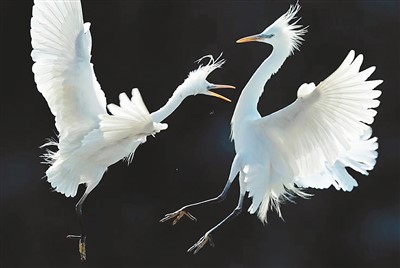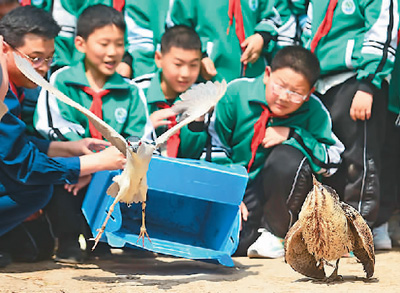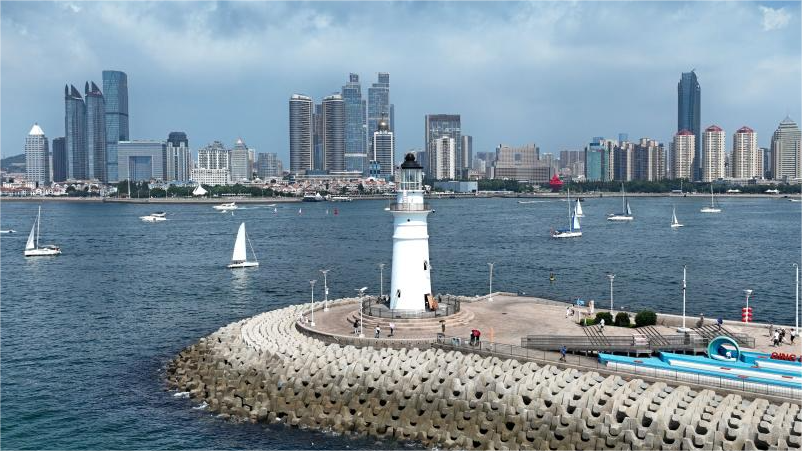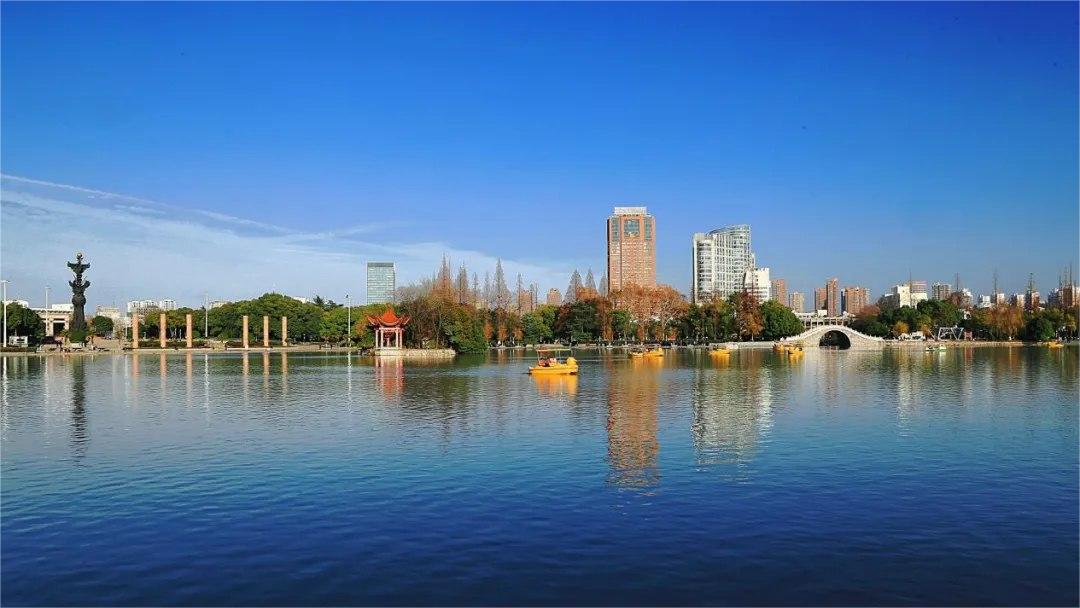China's migratory bird sanctuaries serve as vivid examples of harmony between humanity, nature

Chinese egrets are seen on Shedao Island or Snake Island off the coast of Dalian, northeast China’s Liaoning Province. (Photo by Wang Xiaoping/Xinhua)
Recently, five nominated sites of the migratory bird sanctuaries along the Coast of the Yellow Sea-Bohai Gulf of China successfully passed the review process to be included on the World Heritage List by the United Nations Educational, Scientific and Cultural Organization (UNESCO) during the 46th Session of the UNESCO World Heritage Committee held in New Delhi, India.
The newly-admitted five sites are part of the migratory bird sanctuaries along the Coast of the Yellow Sea-Bohai Gulf of China (Phase II), which is a serial extension of the property of the same name (Phase I) already listed on the World Heritage List in 2019. Phase I sanctuaries are located in Yancheng city, east China’s Jiangsu Province.
The migratory bird sanctuaries include multiple conservation areas in provinces including Jiangsu, Shandong, Hebei, and Liaoning, as well as Shanghai.
The sanctuaries, located in the world’s largest intertidal wetland, serve as a crucial habitat for migratory birds along the East Asian-Australasian Flyway. The migration route extends from Siberia and Alaska through East, Southeast and South Asia, all the way to Oceania, crossing 22 countries. It is the most diverse and has the highest concentration of endangered species among migration routes globally, providing essential breeding, resting and wintering grounds for tens of millions of waterfowl.
The successful inclusion of the migratory bird sanctuaries epitomizes China’s endeavor to advance ecological conservation. Since 2012, the country has significantly bolstered its ecological protection efforts through comprehensive improvements in its legal framework and the development of a system of protected areas (PAs).

Falcated ducks fly over the Chongming Dongtan National Nature Reserve in Shanghai. (Photo by Yuan Xiao/Xinhua)
Starting in 2012, China incorporated eco-environmental progress into the Five-sphere Integrated Plan of building socialism with Chinese characteristics together with economic, political, cultural and social progress.
In 2019, it formally proposed building a PA system centered around national parks, supported by nature reserves and supplemented by nature parks.
Three years later, China’s new law on wetlands protection was put into force, further strengthening the protection of coastal wetlands.
Meanwhile, China has made significant progress in the protection of coastal wetlands and migratory birds since 2017. As of July 2024, approximately 150,000 square kilometers of marine area had been included in the country’s ecological conservation red lines.

A night heron and a great bittern are released into the wild at the Nandagang wetland in Cangzhou, north China’s Hebei Province. (Photo by Fu Xinchun/Xinhua)
Since the application to inscribe the portion of the migratory bird sanctuaries along the Coast of the Yellow Sea-Bohai Gulf of China on the World Heritage List was made, the populations of several endangered bird species that use this region for seasonal stopover or breeding has remained stable or increased. These birds include Siberian white cranes, black-faced spoonbills, oriental storks, Chinese egrets, black-headed gulls, relict gulls, Chinese crested terns, and spoon-billed sandpipers.
The migratory bird sanctuaries showcase that China’s efforts to promote ecological progress over the past 10-plus years have made significant contributions to the world.
The protected areas involved in the migratory bird sanctuaries include nature reserves under strict protection, national park candidates, and mini nature reserves and wetland parks with traditional fishing activities. The mini nature reserve is a small, protected area set aside for the protection of rare and endangered wildlife populations and typical plant communities.
The surrounding areas of the migratory bird sanctuaries feature vast farmlands, fishponds, towns, busy international waterways, and substantial green energy infrastructure, exemplifying coexistence between humans and wildlife.
In 2021, a project that aims to restore bird habitats conducted in the first phase of the migratory bird sanctuaries in Yancheng was listed as one of the “100+ Biodiversity Positive Practices and Actions Around the World” at the 15th meeting of the Conference of the Parties to the United Nations Convention on Biological Diversity (COP15).

A flock of birds fly over a wetland at the mouth of the Yalujiang River in Dandong, northeast China’s Liaoning Province. (Photo by Liu Haidong/Xinhua)
In 2022, the 2nd Cycle of UNESCO World Heritage & Sustainable Tourism Programme - Chinese Pilot Studies was launched in Badou village located in the Tiaozini area of Phase I sanctuaries.
These pilots and heritage sites may have the opportunity to serve as a platform for shaping a new paradigm for human-wildlife relations.
In the past, most natural heritage sites were located upstream of river systems, with small groups of people playing the role of “guardians”. These new heritage sites and pilots are located downstream of river systems.
This means that people living upstream of the river are connected to the wellbeing of these sites as their actions and influence on the river systems will have an impact.
In this relationship, protection of these sites is not just the responsibility of a small group of “guardians”, but the obligation of all those living in the broader watershed space. This relationship hopefully becomes a part of their way of life, meaning more people will have both the possibility and necessity to participate in the protection of the heritage sites.
Photos
Related Stories
Copyright © 2024 People's Daily Online. All Rights Reserved.









